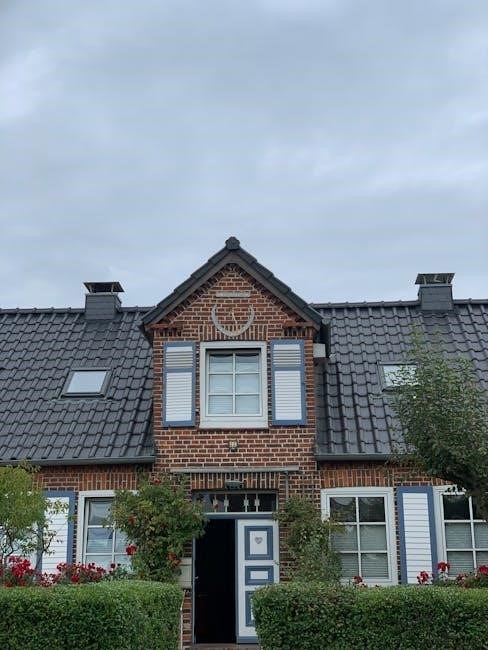Agatha Christie’s “And Then There Were None”: PDF Resources and Analysis
Agatha Christie’s masterpiece, “And Then There Were None,” continues to captivate readers with its intricate plot and suspenseful atmosphere. This analysis explores the availability of the novel in PDF format, offering resources for free downloads and examining the story’s literary significance.
“And Then There Were None,” a novel by Agatha Christie, stands as a cornerstone of mystery literature, captivating readers since its publication. The narrative unfolds on an isolated island, where ten strangers are lured under various pretenses. As they gather, a gramophone record accuses each of a past crime, setting the stage for a deadly game.
One by one, the guests meet their demise, mirroring the verses of a chilling nursery rhyme, “Ten Little Soldier Boys.” The suspense escalates as the dwindling group grapples with the realization that a murderer lurks among them, meticulously executing a sinister plan.
Christie masterfully crafts an atmosphere of paranoia and distrust, leaving readers guessing until the very end. “And Then There Were None” is a testament to her skill in creating intricate plots, memorable characters, and a truly unforgettable reading experience. The novel explores themes of guilt, justice, and the dark side of human nature, solidifying its place as a classic of the genre.
Availability of “And Then There Were None” in PDF Format
“And Then There Were None” has become widely accessible in PDF format, catering to the preferences of modern readers who enjoy digital books. This availability allows enthusiasts to delve into Christie’s thrilling narrative on various devices, offering convenience and portability. Numerous online platforms provide access to the PDF version of the novel, both for free and through paid services.
Readers can explore options such as online libraries, digital archives, and e-book retailers to find the PDF. While some sources offer free downloads, it’s crucial to ensure the legitimacy and safety of the website to avoid copyright infringement or potential malware.
Paid platforms often provide enhanced versions with features like interactive tables of contents and adjustable font sizes. Regardless of the chosen source, the widespread availability of “And Then There Were None” in PDF format ensures that readers can easily immerse themselves in Agatha Christie’s captivating world of mystery and suspense, experiencing the story at their convenience;

Free PDF Downloads
Finding free PDF downloads of “And Then There Were None” is a common pursuit for readers seeking cost-effective access to Agatha Christie’s renowned novel. Several online platforms offer free versions of the book, allowing enthusiasts to enjoy the thrilling mystery without financial constraints. However, it’s essential to exercise caution when downloading from these sources.
Websites like Project Gutenberg, Internet Archive, and various online libraries often provide free access to classic literature, including “And Then There Were None.” These platforms typically offer legitimate copies of the book that are in the public domain or available under open licenses.
Nevertheless, users should be vigilant about potential risks associated with downloading files from unknown or unverified sources. To ensure safety, it’s advisable to scan downloaded PDFs with antivirus software and verify the website’s reputation before proceeding.
By taking these precautions, readers can enjoy “And Then There Were None” for free while safeguarding their devices and personal information, ensuring a secure and enjoyable reading experience.
Sources for Downloading the PDF
When seeking a reliable source for downloading “And Then There Were None” in PDF format, several options are available, each with its own advantages. One primary source is the Internet Archive, which hosts scanned versions of the book, often available for free borrowing or download. This platform ensures the file is a legitimate copy, contributing to a secure reading experience.
Project Gutenberg is another excellent resource, offering a variety of classic books, including Agatha Christie’s works, in various digital formats. These versions are typically well-formatted and free of copyright restrictions, making them a safe and legal option.
Additionally, many online libraries and educational websites provide access to PDF versions of the novel, sometimes requiring registration or membership. These sources often offer additional features such as annotations and study guides, enhancing the reading and learning experience.
Ultimately, selecting a reputable source ensures the quality and safety of the downloaded PDF, allowing readers to fully enjoy Agatha Christie’s thrilling mystery without concerns about malware or copyright infringement.
Synopsis of “And Then There Were None”
“And Then There Were None” unfolds on a remote island where ten strangers, each harboring a dark secret, are lured under false pretenses. Invited by a mysterious host, U.N. Owen, they soon discover their shared pasts connect them through acts of unpunished crimes. As a gramophone record accuses each guest, the chilling game begins.
Isolated from the mainland, the guests are systematically murdered, one by one, in a manner mirroring the ominous nursery rhyme “Ten Little Soldiers.” With each death, suspicion intensifies, and the remaining individuals grapple with fear and paranoia, turning against each other as they try to uncover the killer among them.

The dwindling group becomes increasingly desperate, realizing that the murderer is not only present but also intimately familiar with their past transgressions. As the body count rises, the survivors attempt to unmask the elusive U.N. Owen and stop the relentless cycle of vengeance before they, too, fall victim to the island’s deadly justice.
Characters in “And Then There Were None”
“And Then There Were None” features a diverse cast, each marked by a hidden past. Justice Wargrave, a retired judge, possesses a commanding presence. Vera Claythorne, a former governess, carries the weight of a child’s death. Philip Lombard, a mercenary, is known for his ruthlessness. Emily Brent, a pious spinster, adheres to strict moral codes.
Dr. Armstrong, a respected physician, struggles with a past mistake. Anthony Marston, a wealthy and reckless young man, represents the careless elite. General Macarthur, a war hero, is haunted by a wartime decision. Mr. and Mrs. Rogers, the butler and cook, serve their mysterious host.
Each character brings a unique perspective and contributes to the mounting tension on the island. Their individual flaws and secrets are gradually revealed, adding layers of complexity to the unfolding mystery. As they face their accusations and confront their mortality, the characters expose the darker aspects of human nature.
Themes Explored in “And Then There Were None”
“And Then There Were None” delves into profound themes of justice, guilt, and morality. The novel questions the nature of justice, exploring whether it can be truly served outside the bounds of law. The characters grapple with their past actions, highlighting the pervasive nature of guilt and its impact on their present lives.
The story examines the complexities of morality, challenging the notion of absolute right and wrong. Each character is accused of a crime, forcing them to confront their own moral failings. The isolation of the island amplifies their internal struggles, pushing them to the brink of despair.
Revenge emerges as a central theme, driving the actions of the unseen orchestrator. The novel explores the destructive consequences of seeking retribution and the cyclical nature of violence. Ultimately, “And Then There Were None” prompts readers to consider the darker aspects of human nature and the consequences of unchecked impulses.
Literary Significance of “And Then There Were None”

“And Then There Were None” holds a significant place in literary history as one of Agatha Christie’s most celebrated and influential works. The novel’s innovative plot structure, featuring a closed circle of suspects and a diminishing cast, has become a hallmark of the mystery genre. Its impact extends beyond the realm of crime fiction, influencing literature, film, and popular culture.
Christie’s masterful use of suspense and psychological tension creates a gripping reading experience. The novel’s exploration of themes such as justice, guilt, and morality adds depth to its narrative, elevating it beyond a simple whodunit.
The novel’s enduring popularity is a testament to its timeless appeal and its ability to resonate with readers across generations. Its influence can be seen in countless works of fiction that have adopted its formula, solidifying its status as a cornerstone of modern mystery literature. “And Then There Were None” remains a benchmark for suspenseful storytelling.

Adaptations of “And Then There Were None”
“And Then There Were None” has been adapted numerous times across various media, demonstrating its enduring appeal and adaptability. These adaptations range from stage plays to film and television productions, each offering a unique interpretation of Christie’s classic tale. The story’s inherent drama and suspense make it a perfect fit for visual and theatrical mediums.
The stage play adaptation, first presented in London in 1943, has been performed countless times around the world. Its success lies in its ability to capture the claustrophobic atmosphere and psychological tension of the novel.

Film and television adaptations have also been widely popular, with various versions released over the years. These adaptations often feature notable actors and directors, further enhancing the story’s appeal. While some adaptations remain faithful to the original plot, others take liberties with the characters or ending. The multiple adaptations highlight the story’s lasting impact on popular culture.
Stage Play Adaptation
The stage play adaptation of “And Then There Were None” holds a significant place in the history of the story’s adaptations. First presented by Bertie Neyer in London in 1943, directed by Irene Hentschel, the play successfully translated the novel’s suspense and mystery to the stage. Its confined setting and focus on character interactions make it a natural fit for theatrical performance.
The play often emphasizes the psychological tension among the characters, highlighting their paranoia and fear as they try to uncover the killer among them. Adaptations for the stage require careful attention to pacing and dialogue to maintain the audience’s engagement and suspense.
Samuel French, a well-known play publisher, distributes the script, making it accessible to theater groups worldwide. This has contributed to the play’s enduring popularity, with numerous productions staged annually. The stage adaptation remains a testament to the story’s timeless appeal and its ability to captivate audiences in different formats.
Film and Television Adaptations

“And Then There Were None” has seen numerous adaptations for film and television, each offering a unique interpretation of Agatha Christie’s thrilling narrative. These adaptations showcase the story’s enduring appeal and its capacity to be reimagined for different audiences.
Various film versions have been produced, some staying faithful to the original plot, while others take creative liberties. Television adaptations, including miniseries and one-off specials, allow for a more detailed exploration of the characters and their backstories, enhancing the psychological depth of the narrative.
The challenge in adapting “And Then There Were None” lies in maintaining the suspense and mystery that are central to the novel. Filmmakers and television producers often use visual cues, sound design, and carefully crafted performances to create a sense of unease and paranoia. Despite variations, these adaptations contribute to the legacy of one of Christie’s most iconic works;
Critical Reception of “And Then There Were None”
“And Then There Were None” has garnered widespread acclaim and remains one of Agatha Christie’s most celebrated works. Critics have consistently praised its ingenious plot, masterful suspense, and psychological depth. The novel’s unique structure, where characters are eliminated one by one according to a chilling nursery rhyme, has been lauded for its originality and effectiveness.
Reviewers often highlight Christie’s skillful character development, noting how each individual’s past secrets and moral flaws contribute to the overall tension. The isolated setting of the island enhances the sense of paranoia and claustrophobia, drawing readers into the unfolding mystery.
Some critics have explored the novel’s darker themes, such as guilt, justice, and the nature of evil. While generally praised, a few critics have pointed out minor inconsistencies or implausibilities in the plot, but these are typically overshadowed by the overall brilliance of the narrative. The enduring popularity of “And Then There Were None” is a testament to its critical success and lasting impact on the mystery genre.
Agatha Christie’s Writing Style in “And Then There Were None”
Agatha Christie’s writing style in “And Then There Were None” is characterized by its clarity, precision, and masterful control of suspense. She employs a straightforward, unadorned prose that allows the intricate plot to take center stage. Christie’s strength lies in her ability to create believable characters with hidden depths, gradually revealing their secrets and motivations.
The dialogue is sharp and realistic, reflecting the personalities and backgrounds of the various characters. Christie expertly uses the isolated setting to amplify the tension, creating a claustrophobic atmosphere that keeps the reader on edge. Her pacing is deliberate, building suspense gradually as the characters are eliminated one by one.
Christie’s use of misdirection and red herrings is particularly effective, keeping the reader guessing until the very end. She also incorporates elements of psychological realism, exploring the characters’ fears, anxieties, and moral dilemmas. This combination of skillful plotting, compelling characters, and atmospheric setting makes “And Then There Were None” a quintessential example of Christie’s signature style.
Analyzing the Mystery Elements

“And Then There Were None” masterfully employs several key mystery elements to create a compelling and suspenseful narrative. The isolated setting of Soldier Island plays a crucial role, trapping the characters and amplifying their sense of vulnerability. The use of the “Ten Little Soldiers” nursery rhyme provides a framework for the murders, creating a chilling sense of inevitability.
Each character harbors a dark secret, contributing to an atmosphere of suspicion and mistrust. Agatha Christie expertly uses red herrings and misdirection to mislead the reader, making it difficult to identify the true killer. The whodunit element is central, as the reader is challenged to unravel the mystery alongside the dwindling group of guests.
The psychological aspect of the mystery is also significant, exploring the characters’ reactions to fear, guilt, and paranoia. The gradual unraveling of their past misdeeds adds another layer of complexity to the plot. The combination of these elements creates a classic mystery that continues to captivate readers with its intricate plot and suspenseful atmosphere.
The Role of Isolation
In “And Then There Were None,” isolation is not merely a setting but a character in itself, profoundly shaping the events and the psychological states of the individuals trapped on Soldier Island. The island’s remote location, cut off from the mainland, immediately establishes a sense of vulnerability and dependence, stripping away the characters’ usual support systems and societal norms. This physical isolation mirrors the emotional and moral isolation each character experiences due to their hidden pasts.

As the story progresses, the isolation intensifies, fostering paranoia and mistrust among the guests. With no outside help available, they are forced to confront their own culpability and the consequences of their actions. The island becomes a microcosm of society, where guilt and suspicion reign supreme. The lack of external interference allows the killer to manipulate the situation with impunity, heightening the suspense and creating a claustrophobic atmosphere.
Ultimately, the isolation on Soldier Island serves to amplify the characters’ inner demons and expose their true natures, contributing significantly to the novel’s themes of justice, guilt, and the inescapable consequences of one’s past.
The Significance of the Nursery Rhyme
The nursery rhyme “Ten Little Soldier Boys” is central to the plot and thematic structure of Agatha Christie’s “And Then There Were None.” More than just a countdown, the rhyme dictates the order and manner of the characters’ deaths, creating a macabre game where life imitates art with chilling precision. Each verse corresponds to a specific demise, heightening the suspense as the guests realize the deadly parallel between the poem and their reality.
The seemingly innocent rhyme contrasts sharply with the heinous crimes committed, underscoring the novel’s exploration of justice and morality. The simplicity of the rhyme also serves to mask the complexity of the killer’s plan, adding to the mystery and intrigue. As the characters desperately try to decipher the meaning behind each verse, they become increasingly aware of their impending doom.

Ultimately, the nursery rhyme acts as a constant reminder of the characters’ past sins and the inescapable consequences they face. It transforms the isolated island into a stage for a deadly performance, where the rhyme orchestrates the unfolding tragedy, making it an indispensable element of the novel’s enduring appeal.
“And Then There Were None” remains a cornerstone of crime fiction, showcasing Agatha Christie’s unparalleled skill in crafting intricate plots and unforgettable characters. The novel’s exploration of guilt, justice, and morality continues to resonate with readers, prompting discussions about the nature of punishment and the consequences of past actions. Its unique premise, where the victims are also the accused, sets it apart from traditional detective stories, challenging our notions of right and wrong.
The enduring popularity of “And Then There Were None” is a testament to Christie’s ability to create a timeless narrative that transcends generations. Whether experienced through its original text, various adaptations, or readily accessible PDF versions, the story’s impact remains undiminished. The novel’s masterful blend of suspense, psychological depth, and clever misdirection ensures its place as a classic in the literary canon.



